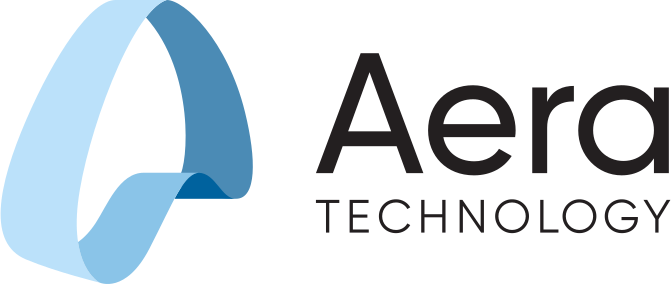Webinar Recap: Reimagining Control Towers with AI-Powered Decision Intelligence

Summary
In our Future.Now webinar, “Reimagining Control Towers with AI-Powered Decision Intelligence,” we explored how AI-powered decision intelligence is reshaping supply chain control towers. These next-generation systems are no longer just tools for visibility — they’re built to act. By using AI, control towers can sense changes, recommend responses, take action, and learn continuously to improve how decisions are made. As supply chains become more complex and fast-moving, combining AI with human expertise is proving to be a powerful way to stay ahead.
The session focused on how advanced technology is helping companies move from reacting to events to staying ahead of them. From automation and cross-industry use cases to the importance of strong teams and change management, it showed what’s needed to build smarter, more responsive supply chains.
Key Takeaways
-
The Evolution of Control Towers:
Older control towers were designed to react after problems happened. They often relied on manual steps and scattered data. With AI-powered decision intelligence, control towers are becoming much more capable — continuously gathering signals, offering recommendations, taking action, and learning from outcomes to improve over time. -
From Visibility to Autonomy:
Control towers are no longer just about seeing what’s happening. They are shifting toward making real-time decisions on their own. By bringing together live data and predictive tools, companies can respond faster and more accurately to changing conditions. -
Human + Machine Collaboration:
AI doesn’t replace people — it works alongside them. Intelligent systems can sort through complex information and suggest next steps, while human experts bring judgment and strategic oversight. Together, they make decisions faster and with more confidence. -
Cross-Industry Impact:
AI-powered control towers are already creating value in a wide range of industries — including consumer goods, life sciences, and manufacturing. These examples show that AI solutions can be flexible and useful in many different supply chain settings. -
The Role of Culture and Change Management:
Technology alone isn’t enough to drive real change. Companies need a clear strategy, strong leadership, and teams that are ready to adapt and grow. Ongoing training and support help ensure that new systems are used effectively and deliver lasting value.
Speakers
 |
Suraj Ramalingam, Solution Engineer at Aera Technology With experience at Salesforce and Procter & Gamble, Suraj brings a depth of knowledge in international supply chains, solution engineering, and operational excellence. His work focuses on guiding clients through digital transformation. |
 |
Alex Nasciutti, Partner, Supply Chain & Operations at EY A veteran in digital transformation, Alex helps global enterprises leverage AI, analytics, and data-driven strategies. His experience spans consumer goods, life sciences, and manufacturing. |
 |
Brian Waits, Management Consultant Brian leads EY’s end-to-end supply chain practice, offering deep expertise in planning, logistics, transportation, and aftermarket services across multiple industries. |
Full Recording
Q&A
Q: How do you differentiate between operational alerts (e.g., solve out-of-stock) and more strategic recommendations (e.g., change country-of-origin sourcing to reduce tariffs)?
A: Aera Technology’s decision intelligence architecture classifies decisions based on urgency, scope, frequency, and complexity. This framework ensures recommendations are aligned to the right business context and level of human oversight — whether operational or strategic.
Q: Is there a relationship between the maturity of a subprocess (e.g., Lean Sigma maturity) and the ability to automate alerts?
A: Yes. The more mature and governed the subprocess, the greater Aera’s ability to shift from simple alerting to fully automated execution. Higher maturity increases trust, tightens decision loops, and enables end-to-end automation.
Q: Where does Aera’s capability to write back the output of the decisions to legacy systems fit into its offering?
A: Aera’s write-back capability is a core differentiator. It moves beyond analytics and planning into the realm of closed-loop, autonomous decision execution — allowing decisions to be pushed directly back into enterprise systems.
Q: What use cases are already fully automated?
A:
- Use Cases: Inventory, lead times, safety stock, backorders, production
- Execution: Real-time ERP writebacks for high-confidence decisions
- Tracking: Embedded metrics, confidence logs, and outcome-based KPIs
- Learning Loop: Feedback mechanisms continuously refine skills
- Governance: Confidence scoring, criticality tiers, and human overrides ensure control
Q: If we already have an in-house control tower, can that speed up Aera’s implementation?
A: Absolutely. Having an existing control tower — especially if the required data sources are known — can significantly accelerate design and deployment.
Q: In reviewing the decision support screen, how does the tool consume the impact of one decision you execute on the other areas? For example, if I make a decision in demand planning, how is its impact on inventory or procurement handled?
A: Aera’s platform is designed around a connected Decision Graph that models and updates the system-wide impact of every decision. So when you make a change — say, in demand planning — the Decision Graph calculates how that affects related areas like inventory stocking, procurement, fulfillment, or even finance. It ensures that the cascading effects of each decision are understood and accounted for in real time.
Q: Does the platform monitor the executional success of recommended actions taken? Also, in the demo we saw 20 demand-related recommendations. Do those require continuous prompting to appear, or does the system surface them automatically once the data is available?
A: Yes — this kind of visibility is built into the Aera Control Room. The platform tracks not just how many recommendations were made, but how many were approved by users, how many were actually executed in the physical supply chain, and what outcomes resulted. As for how recommendations appear, they’re generated automatically once the relevant data is refreshed. There’s no need for users to prompt the system — it continuously monitors for new insights and surfaces recommendations in real time. Key features include:
- Decision Monitoring: Tracks current and pending recommendations by Skill, domain, or geography
- Execution Status: Provides real-time visibility into what decisions have been executed, delayed, or overridden
- Confidence Scoring: Indicates confidence levels and explains the rationale behind each recommendation
- User Actions: Allows users to approve, reject, or simulate decisions before they’re executed
- Business Impact KPIs: Quantifies value delivered — like revenue protected, cost avoided, or inventory optimized
- Audit & Traceability: Maintains a full lineage from data to model to recommendation to action
- Exception Management: Highlights unexecuted or anomalous decisions for manual review
Q: How does Aera handle orchestration across planners? For example, getting approval from someone at the shipping location for a stock transfer.
A: Aera blends autonomous execution with human-in-the-loop approvals. Structured workflows and role-based interfaces enable cross-functional orchestration while maintaining traceability and governance.
Q: As automated decisions become more common, how does Aera ensure data privacy is protected — and are users required to continuously prompt the system to generate recommendations, or is it autonomous once data is fed into the platform?
A: Data privacy and autonomous functionality are both foundational to Aera’s design. On the privacy front, Aera uses industry-leading safeguards:
- Data Encryption: TLS in transit, AES-256 at rest
- Access Control: Role-based access control and tenant isolation
- Compliance: Meets standards such as GDPR, CCPA, and is backed by data protection agreements
- Ownership: Customers retain full control over their data
- LLM Usage: No customer data is used to train models; prompts are protected
- Logging: Every access and decision is fully traceable
Q: Can non-technical users build or expand skills on their own?
A: Yes. Aera is designed to empower both technical and business users to build and evolve skills — no coding background required.
Q: How does Aera ensure transparency and explainability as the system evolves?
A: Aera operates as a “glass box” — not a black box. Users have visibility into every component involved in decision-making and skill creation. We’re happy to show this in a follow-up session.
Q: When Aera recommends actions in response to disruptions, does it only consider current master data and routes — or can it use historical and external data too?
A: Aera can incorporate historical data — as long as it’s been ingested into the Decision Data Model — which helps it propose smarter, more contextual decisions.






